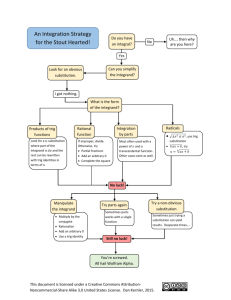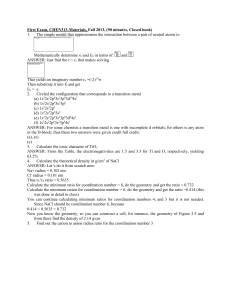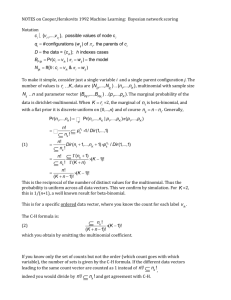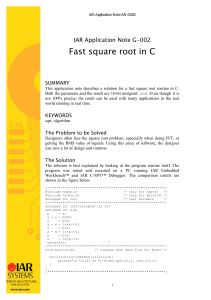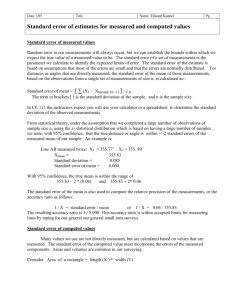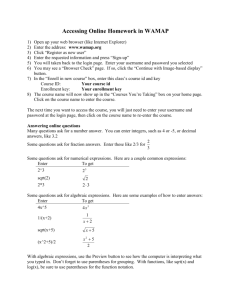Lesson 13: Integration Techniques Summary and Review
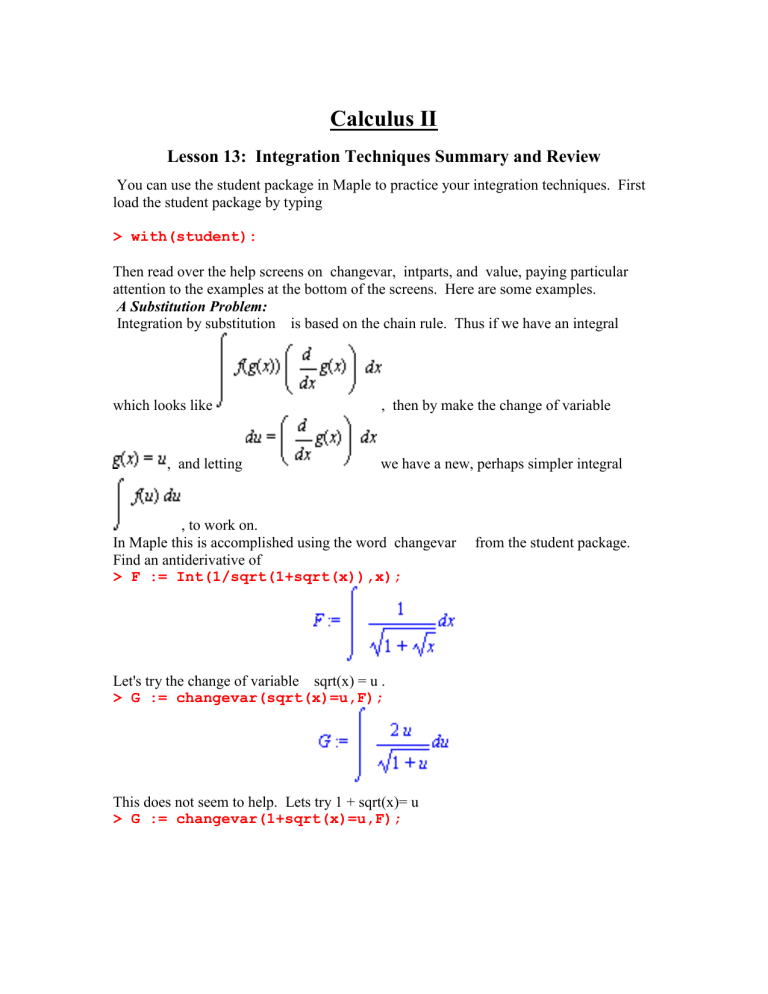
Calculus II
Lesson 13: Integration Techniques Summary and Review
You can use the student package in Maple to practice your integration techniques. First load the student package by typing
> with(student):
Then read over the help screens on changevar, intparts, and value, paying particular attention to the examples at the bottom of the screens. Here are some examples.
A Substitution Problem:
Integration by substitution is based on the chain rule. Thus if we have an integral which looks like
, and letting
, then by make the change of variable
we have a new, perhaps simpler integral
, to work on.
In Maple this is accomplished using the word changevar from the student package.
Find an antiderivative of
> F := Int(1/sqrt(1+sqrt(x)),x);
Let's try the change of variable sqrt(x) = u .
> G := changevar(sqrt(x)=u,F);
This does not seem to help. Lets try 1 + sqrt(x)= u
> G := changevar(1+sqrt(x)=u,F);
Now we can do it by inspection, so just finish it off.
> G := value(G);
Now substitute back and add in the constant.
> F := subs(u=sqrt(x),G) + C;
Integration by substitution is the method use try after you decide you can't find the antiderivative by inspection.
An Integration by Parts Problem:
Integration by parts is based on the product rule for derivatives. It is usually written
. It turns one integration problem into one which 'may' be more doable. Once you decide to use parts, the problem is what part of the integrand to let be u.
Integrate
> F := Int(x^2*arctan(x),x);
The word is intparts. Let's try letting
> G := intparts(F,x^2);
.
That was a bad choice. Try letting
> G := intparts(F,arctan(x));
This is much more promising. Split off the integral on the end.
> H := op(2,G);
Now do a partial fractions decomposition of the integrand of H, using parfrac.
> H:= Int(convert(integrand(H),parfrac,x),x);
Now we can do it by inspection.
> H1 := 1/6*x^2 - 1/3*1/2*ln(1+x^2);
Let's check this with the student value.
> simplify(value(H-H1));
Note the difference of a constant, which is fine for antiderivatives.
ETAIL: The problem of choosing which part of the integrand to assign to u can often be solved quickly by following the etail convention. If your integrand has an Exponential factor, choose that for u, otherwise if it has a Trigonometric factor, let that be u, otherwise choose an Algebraic factor for u, otherwise chose an Inverse trig function, and as a last resort choose u to be a logarithmic factor. Let dv be what's left over.
A Trig Substitution:
Find an antiderivative of
> F := Int(x^3/sqrt(x^2+1),x);
The presence of suggests letting .
> G := changevar(x=tan(t),F,t);
Now use the trig identity .
> G := subs(sqrt(1+tan(t)^2)=sec(t),G);
Another substitution into the integrand.
> G := subs(tan(t)^3 = (sec(t)^2-1)*tan(t),G);
Let's make a change of variable,
> H := changevar(sec(t)=u,G);
From here, we can do it by inspection.
> H := value(H);
Now unwind the substitutions.
> G := subs(u=sec(t),H);
> F := subs(t = arctan(x),G);
> F := subs(sec(arctan(x))=sqrt(1+x^2),F) + C;
Checking this calculation:
> F1 := int(x^3/sqrt(x^2+1),x);
It looks different, but is it?
> simplify(F-F1);
Yes, but only by a constant.
A Partial Fractions Problem
Integrate the rational function
> y :=(4*x^2+x -1 )/(x^2*(x-1)*(x^2+1));
First get the partial fractions decomposition of y.
> y := convert(y,parfrac,x);
We can almost do this by inspection, except for the last term.
> F := Int(y,x);
> F := expand(F);
Now we can do each one by inspection. So we'll just use value .
> F := value(F) + C;
Exercises:
Exercise: Use the student package to perform the following integrations.
Exercise: Find the area of the region enclosed by the x-axis and the curve on the interval . Sketch the region. Then find the vertical line the region in half and plot it.
that divides
Exercise: Find the length of the graph of the parabola from O(0,0) to P(10,100).
Find the point on the graph which is 10 units from O along the graph. Make a sketch, showing the points O, P, and Q on the graph.
Exercise: Find the volume of the solid of revolution obtained by revolving the region trapped between the the graph of on and the x-axis about the xaxis. Sketch a graph. Does this volume approach a finite limit as n gets large?

